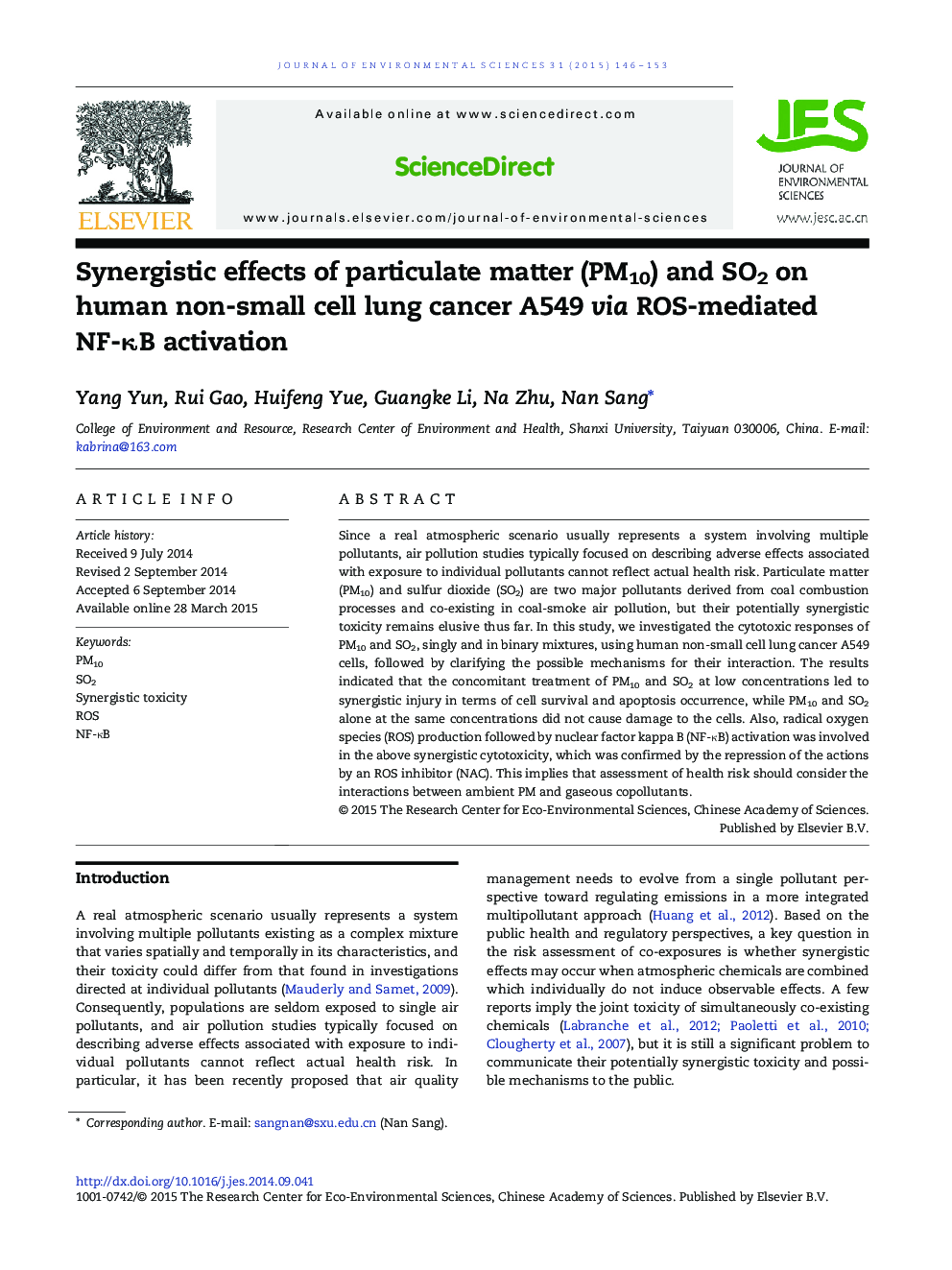| Article ID | Journal | Published Year | Pages | File Type |
|---|---|---|---|---|
| 4454083 | Journal of Environmental Sciences | 2015 | 8 Pages |
Since a real atmospheric scenario usually represents a system involving multiple pollutants, air pollution studies typically focused on describing adverse effects associated with exposure to individual pollutants cannot reflect actual health risk. Particulate matter (PM10) and sulfur dioxide (SO2) are two major pollutants derived from coal combustion processes and co-existing in coal-smoke air pollution, but their potentially synergistic toxicity remains elusive thus far. In this study, we investigated the cytotoxic responses of PM10 and SO2, singly and in binary mixtures, using human non-small cell lung cancer A549 cells, followed by clarifying the possible mechanisms for their interaction. The results indicated that the concomitant treatment of PM10 and SO2 at low concentrations led to synergistic injury in terms of cell survival and apoptosis occurrence, while PM10 and SO2 alone at the same concentrations did not cause damage to the cells. Also, radical oxygen species (ROS) production followed by nuclear factor kappa B (NF-κB) activation was involved in the above synergistic cytotoxicity, which was confirmed by the repression of the actions by an ROS inhibitor (NAC). This implies that assessment of health risk should consider the interactions between ambient PM and gaseous copollutants.
Graphical abstractThe concomitant exposure of PM10 and SO2 at lower concentration led to synergistic injury on cell survival and apoptosis occurring. The ROS production followed by NF-κB activation was involved in the above synergistic cytotoxicity. The synergism of PM10 and SO2 may be occurring at intermediate steps in pathogenic pathways.Figure optionsDownload full-size imageDownload as PowerPoint slide
